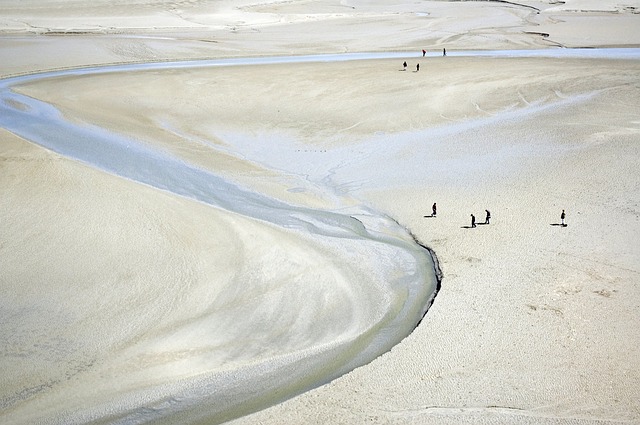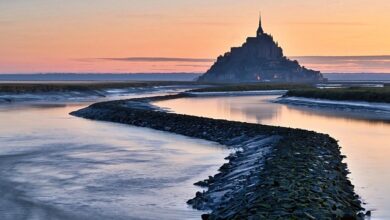Weather in France and How to Prepare for Different Seasons

France, with its diverse geography and climate zones, offers a wide range of weather conditions throughout the year. From the sun-drenched beaches of the French Riviera to the snowy peaks of the Alps, understanding the seasonal variations is essential for planning your trip or daily activities. Here’s a comprehensive guide to France’s weather by season, along with tips on how to prepare for each.
1. Spring (March to May): Blooming Beauty and Mild Weather
Weather Overview:
Spring in France is characterized by mild temperatures, longer daylight hours, and blooming landscapes. The weather can vary significantly depending on the region:
- Northern France (Paris, Normandy): Cool mornings and evenings with daytime highs ranging from 10°C to 20°C (50°F to 68°F). Occasional rain showers are common.
- Southern France (Provence, Côte d’Azur): Warmer and sunnier, with temperatures averaging 15°C to 25°C (59°F to 77°F).
- Mountainous Regions (Alps, Pyrenees): Snow may linger at higher altitudes, but lower elevations begin to warm up.
How to Prepare:
- Clothing: Layered outfits are key. Bring a light jacket, sweater, and waterproof coat for unpredictable rain. Comfortable walking shoes are ideal for exploring cities and countryside trails.
- Activities: Spring is perfect for outdoor adventures like hiking, cycling, and visiting gardens (e.g., Monet’s Gardens in Giverny). It’s also a great time for wine tours in regions like Bordeaux and Burgundy.
- Tips: Check local forecasts before heading out, as spring weather can change quickly. Pack an umbrella or rain poncho for sudden showers.
2. Summer (June to August): Sunshine and Festivals
Weather Overview:
Summer is peak tourist season in France, thanks to warm, sunny days and vibrant cultural events. However, heatwaves can occur, especially in southern regions.
- Northern France: Temperatures range from 18°C to 28°C (64°F to 82°F), with occasional thunderstorms.
- Southern France: Hot and dry, with temperatures often reaching 30°C to 35°C (86°F to 95°F) in cities like Marseille and Nice.
- Coastal Areas: Sea breezes provide relief from the heat along the Atlantic and Mediterranean coasts.
- Mountainous Regions: Cooler temperatures make summer ideal for hiking and alpine activities.
How to Prepare:
- Clothing: Lightweight, breathable fabrics like cotton and linen are essential. Don’t forget sunglasses, sunscreen (SPF 30+), and a wide-brimmed hat to protect against strong UV rays.
- Hydration: Carry a reusable water bottle to stay hydrated, especially in hot regions.
- Activities: Enjoy beach days on the French Riviera, explore lavender fields in Provence, or attend festivals like Bastille Day celebrations (July 14th).
- Tips: Book accommodations and transportation well in advance, as summer is the busiest travel period. Avoid midday sun exposure during heatwaves.
3. Autumn (September to November): Golden Landscapes and Crisp Air
Weather Overview:
Autumn brings cooler temperatures, golden foliage, and fewer tourists. It’s a transitional season with varying weather patterns:
- Northern France: Temperatures drop to 10°C to 20°C (50°F to 68°F), with increased rainfall.
- Southern France: Warm early autumn days give way to chillier evenings, with temperatures averaging 15°C to 25°C (59°F to 77°F).
- Wine Regions: Harvest season in areas like Champagne, Bordeaux, and Burgundy creates picturesque vineyard scenes.
- Mountainous Regions: First snowfall typically occurs in late autumn, signaling the start of ski season.
How to Prepare:
- Clothing: Pack layers, including long-sleeved shirts, sweaters, and a waterproof jacket. A scarf and gloves may be necessary in late autumn.
- Activities: Visit vineyards for grape harvest festivals, take scenic drives through forests, or enjoy urban exploration without the summer crowds.
- Tips: Early autumn is still warm enough for outdoor dining and sightseeing, but later months require more preparation for rain and cooler temperatures.
4. Winter (December to February): Chilly Days and Alpine Adventures
Weather Overview:
Winter in France varies greatly by region, offering everything from frosty cityscapes to world-class skiing opportunities.
- Northern France: Cold and damp, with temperatures between 0°C to 10°C (32°F to 50°F). Rain and occasional snow are possible.
- Southern France: Milder winters, with temperatures ranging from 5°C to 15°C (41°F to 59°F). Coastal areas remain relatively temperate.
- Mountainous Regions: Ski resorts in the Alps and Pyrenees experience heavy snowfall, making them popular destinations for winter sports enthusiasts.
- Urban Centers: Cities like Paris and Lyon host festive Christmas markets and holiday decorations, creating a magical atmosphere.
How to Prepare:
- Clothing: Warm, insulated clothing is crucial. Bring a thick coat, thermal layers, wool socks, gloves, and a hat. Waterproof boots are recommended for wet conditions.
- Activities: Hit the slopes in Chamonix or Megève, explore Christmas markets in Strasbourg or Colmar, or indulge in cozy indoor experiences like wine tastings and museum visits.
- Tips: If traveling to ski resorts, book equipment rentals and lessons ahead of time. In cities, dress warmly for outdoor attractions and carry hand warmers for extra comfort.
Regional Highlights and Microclimates
France’s diverse geography means that microclimates exist within short distances. For example:
- Atlantic Coast (Bordeaux, Biarritz): Maritime influence results in mild, rainy winters and cool summers.
- Mediterranean Coast (Nice, Cannes): Mediterranean climate ensures warm, dry summers and mild, wet winters.
- Central Plateau (Auvergne): Continental climate leads to cold winters and warm summers.
- Corsica: Subtropical island with mild winters and hot, humid summers.
General Tips for All Seasons
- Check Local Forecasts: Weather apps and websites like Météo-France provide accurate updates tailored to specific regions.
- Pack Smart: Always include versatile items like a lightweight jacket, comfortable shoes, and adaptors for charging devices.
- Stay Flexible: Be prepared to adjust plans based on weather conditions, especially in mountainous or coastal areas.
- Respect Nature: Whether you’re hiking in the Alps or lounging on the Riviera, follow Leave No Trace principles to preserve France’s natural beauty.



